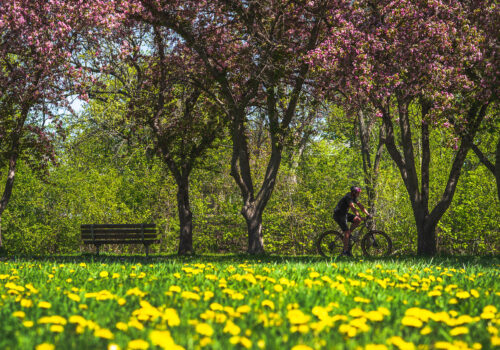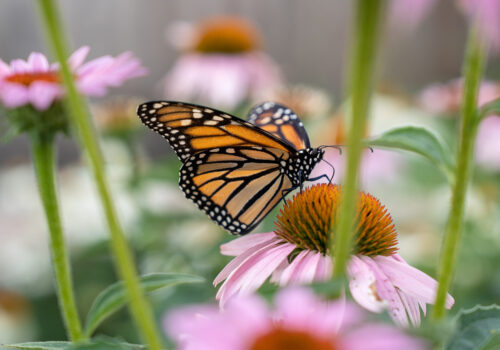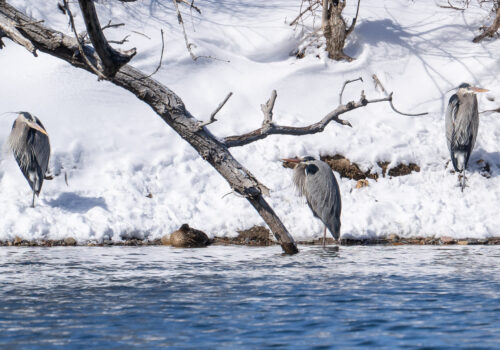Three Ways You Can Help Protect Pollinators at Home this Spring
To the casual observer, a garden in early spring might not look too impressive: bunches of dead plant stalks bent over a soggy mat of fallen leaves. But there’s a lot going on beneath the surface of these seemingly lifeless landscapes.
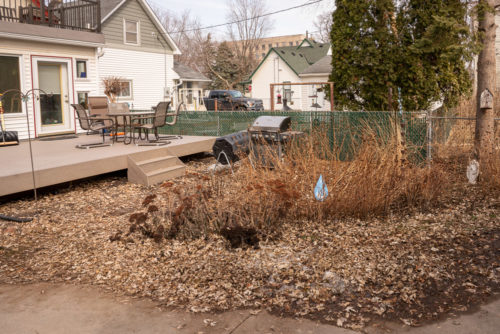
In fact, during the winter our seemingly “dead” yards and gardens play host to an unseen world of pollinating insects. These adaptable creatures survive the cold by entering a dormant state called diapause (similar to hibernation). As longer days and warmer temperatures arrive, they emerge from their various hiding places — underneath leaves, in hollow plant stems, and underground — and begin their critically important work of preserving our food chain.
With the mild days of early spring now upon us, some might be tempted to get an early start on their spring garden cleanup. Don’t do it! Mother Nature needs you to leave your garden nice and messy for just a little longer. Here’s an explanation of why, along with our four tips for a healthy, eco-friendly spring yard.
Hold Off on Your Garden Cleanup Until Late Spring
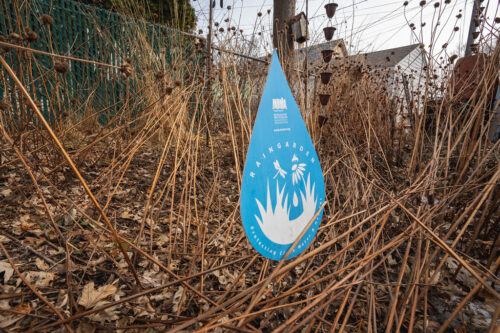
No matter what kind of landscaping you have, holding off on your annual spring yard cleanup can make the difference between life or death for pollinators and other beneficial insects. As a rule of thumb, most of them will not emerge until temperatures are consistently above 50 degrees Fahrenheit, so waiting until mid-April or early May is ideal. This means putting off activities like raking up leaves, cutting down dead grass and plant stems, and laying down mulch.
Of course, every case is unique. We don’t want dead leaves getting blown into the streets, clogging up stormdrains, or smothering turfgrass, so a little preventative raking may be appropriate depending on the circumstances. The key point is to be selective about where you rake: Try to let leaves accumulate in spots where they’ll stay put. Raingardens, with their bowl-shaped depressions and tall, native plants, do a great job of holding all those nutrient-rich leaves in place. Likewise, edges of fenced-in yards or areas lined with tall plants or trees will do a good job of keeping leaves from getting blown around.
When the time comes, check out our guide to spring maintenance for native plants.
Leave Some Weeds for the Pollinators
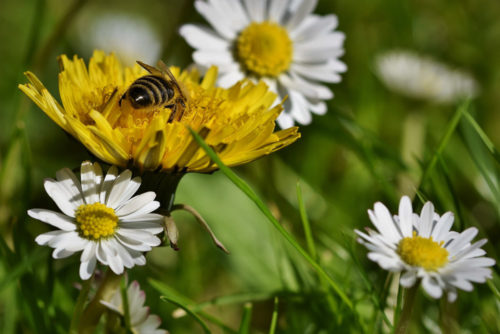
Now that you’ve helped all those pollinators survive the winter by leaving their homes undisturbed, why not ensure they have enough food to survive? Weeds like dandelion are often considered a nuisance, but are actually an important food source for pollinators — especially early in the season, before many other types of flowering plants begin to bloom. Letting a few flowering weeds take root in your yard — at least temporarily — can help sustain pollinators until more desirable types of flowers take over. This is why many environmental groups encourage residents to practice “No-Mow-May” to provide extra habitat early in the growing season.
Dandelions and other weeds can become a problem, of course. They compete with other plants for space, sunlight and nutrients, and they spread rapidly if left unchecked. But perhaps there is a happy compromise: Are there spots in your yard where a few dandelions won’t bother you? If so, consciously leaving a few behind a few to feed the pollinators — while removing them from parts of your yard where they might overwhelm other plants — might be a reasonable choice. You can also leave them for pollinators to feed on and then mow them right before seed heads develop if you’re worried about dandelions spreading.
Give Your Landscape a Pollinator-Friendly Makeover
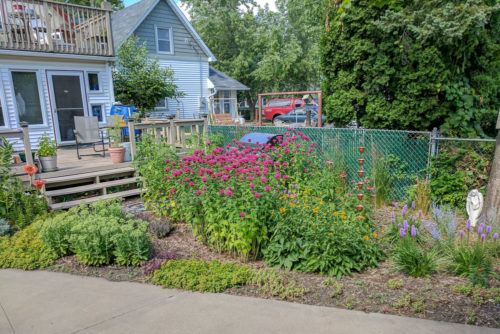
If you want to take your eco-conscious yard care practices to the next level, then it’s time to consider adding some pollinator-friendly plants to your landscape. This doesn’t have to be complicated; it can be as simple as carving out a space in your yard to plant a few native perennials. Even a small patch of native plants in your yard can provide a meaningful source of habitat, with the added bonus of helping soak up your stormwater runoff.
Spring is a great time to score some native plants — either for free or at a discount — with many plant exchanges and sales happening around the metro area. (Check out our plant sale list!) If you’d like to get a head start by doing some initial planning, check out our blog post on planting for pollinators at home. We also recommend signing up for a Blue Thumb workshop to learn the basics of sustainable landscaping strategies.
What are your tips for eco-friendly spring yard care? Email us, or share them on social media with the hashtag #MWMO.

